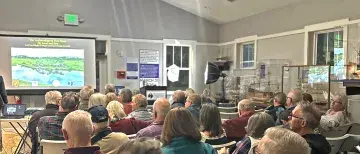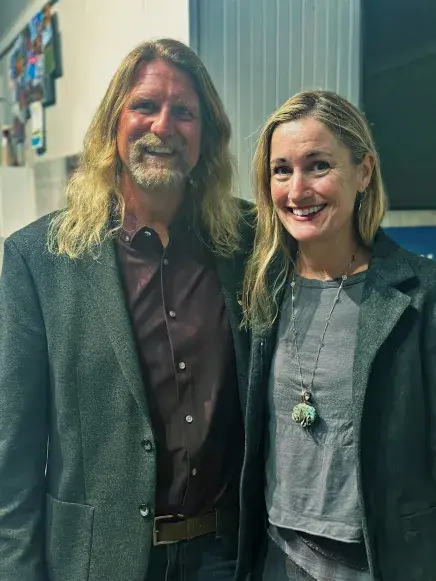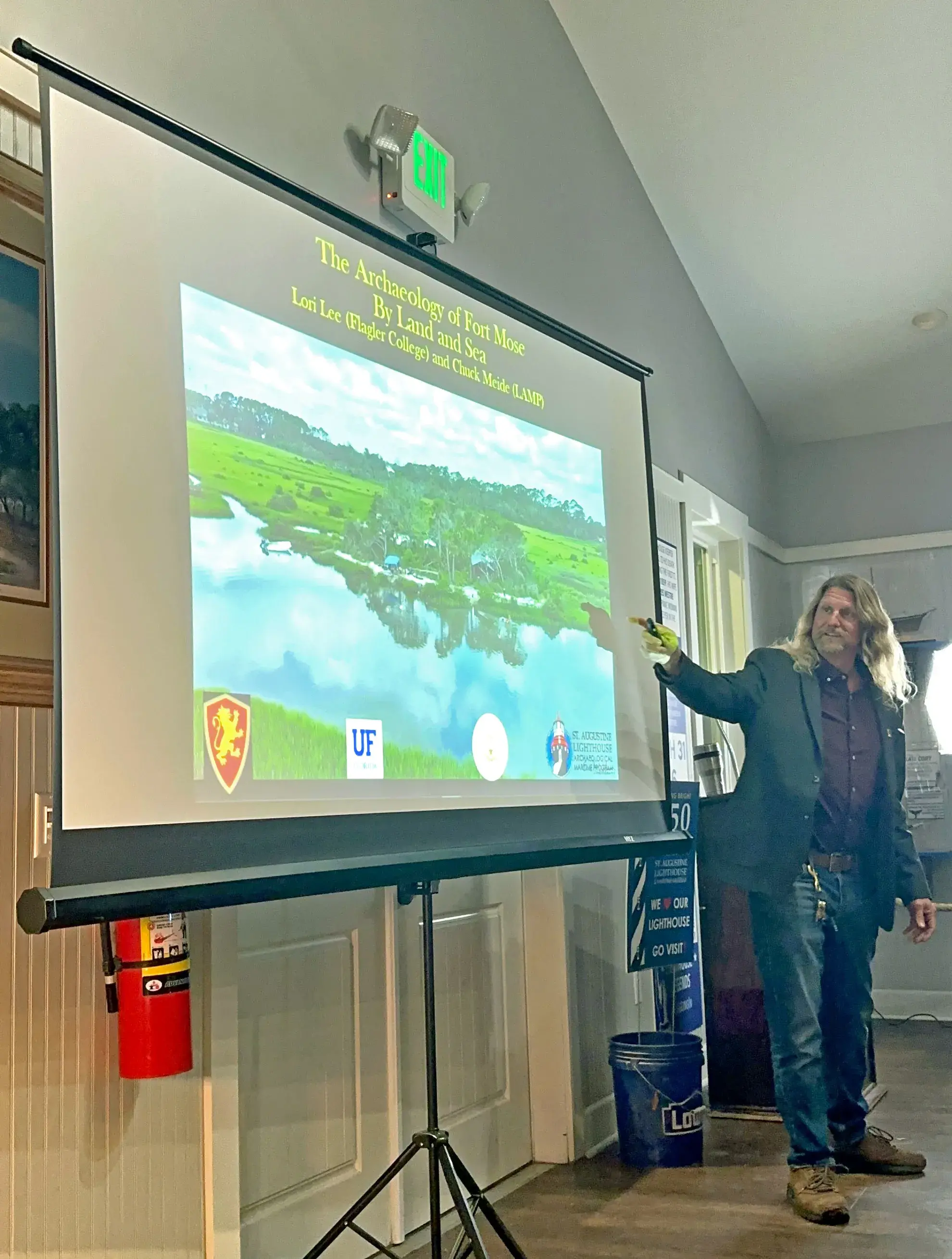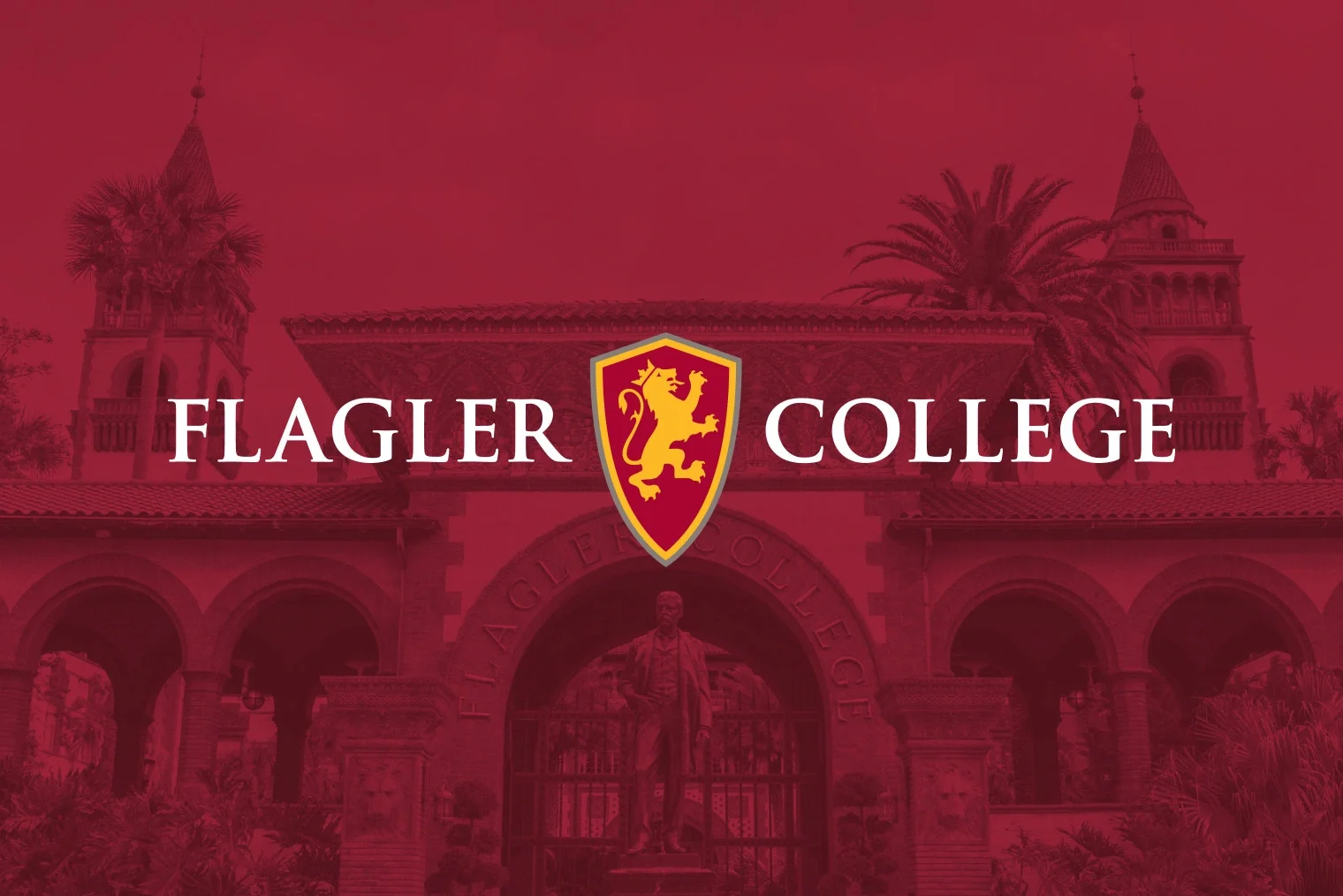
Fort Mose, located two miles north of Flagler College, was the first legally sanctioned free Black settlement in what became the United States (1738-1763). This presentation was part of the 150th anniversary of the St. Augustine Lighthouse, which is hosting a five-lecture local history series for its year-long celebration.

Professor Lee, a historical terrestrial archaeologist, and Chuck Meide, a maritime archaeologist and director of the Lighthouse Archaeological Maritime Program (LAMP), presented archaeological findings from the Fort Mose site, where they have researched for six years. They work with Dr. Mary Elizabeth Ibarrola at the University of Texas at Austin and their teams of students, volunteers, and others to unearth archaeological findings on land and underwater.
Lee shared findings such as pottery shards, buttons, utensils, broken bottles, and medicine bottles. She explained what they revealed about the people who lived and worked at Fort Mose. Meide shared similar finds recovered underwater and wooden evidence of an early pier at the fort. Underwater conditions enable the preservation of wood objects that don’t survive in terrestrial contexts. This is one of the few sites where archaeologists engage in terrestrial and maritime archaeology simultaneously, and the comparative results are intriguing.

Both archaeologists detailed Fort Mose's history and its global significance as a UNESCO World Heritage Site, acknowledging the foundational work of researchers like Dr. Charles H. Fairbanks, Dr. Kathleen Deagan, and Dr. Jane Landers at Fort Mose. There were several key takeaways from the presentation, and overall, the audience found it very informative and engaging. Overall, the event was a success.
We look forward to seeing what more they will unearth and how they will continue contributing to the world’s understanding of Fort Mose's history.


